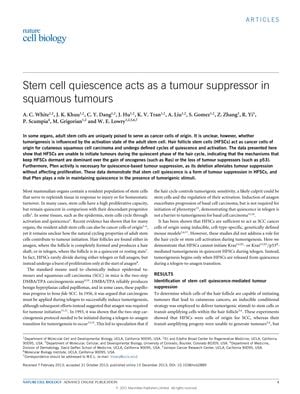TLDR Inactive hair follicle stem cells help prevent skin cancer.
The study from December 15, 2013, investigated the role of hair follicle stem cell (HFSC) quiescence in preventing tumor formation in squamous tissues. It was found that HFSCs could not initiate tumors during their quiescent phase, indicating that stem cell quiescence serves as a tumor suppressor in cutaneous squamous cell carcinoma (SCC). The activation state of HFSCs was critical for tumorigenesis, with tumors forming only when HFSCs exited quiescence. The tumor suppressor Pten was essential for maintaining this quiescent-based tumor suppression, as its deletion led to tumor formation without affecting cell proliferation. Experiments showed that hyperplasias induced by KrasG12D occurred only during the transition from telogen to anagen, not during quiescence, even up to ten weeks post-induction. A strong correlation between the active phase of the hair cycle and SCC in human skin was also observed. The study involved experiments with 3 to 5 mice and quantified up to 1,361 hair follicles in some tests. Additionally, the loss of both Pten and p53, with KrasG12D expression, was sufficient to drive skin malignancies in quiescent HFSCs, resulting in various types of skin tumors. The study highlighted the importance of Pten in maintaining HFSC quiescence and the tumor-suppressive role of stem cell quiescence, especially in organs with cyclical stem cell turnover or activation by injury.
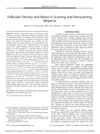 19 citations
,
February 2013 in “The American Journal of Dermatopathology”
19 citations
,
February 2013 in “The American Journal of Dermatopathology” Nonscarring alopecia has higher hair density than scarring alopecia, and hair density can help diagnose the type of alopecia.
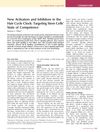 68 citations
,
April 2012 in “Journal of Investigative Dermatology”
68 citations
,
April 2012 in “Journal of Investigative Dermatology” The conclusion is that Fgf18 and Tgf-ß signaling could be targeted for hair loss treatments.
44 citations
,
March 2012 in “Molecular Carcinogenesis” Keratin 15 cells from hair follicles help develop and maintain skin tumors in mice.
158 citations
,
February 2012 in “Journal of Investigative Dermatology” FGF18 helps keep hair in its resting phase, affecting hair growth cycles.
321 citations
,
January 2012 in “Cell stem cell” TGF-β2 helps activate hair follicle stem cells by counteracting BMP signals.
178 citations
,
April 2011 in “Journal of Clinical Investigation” Basal cell carcinomas in mice can start from hair follicle stem cells and other skin cell types, depending on signaling levels.
32 citations
,
January 2010 in “Journal of Dermatological Science” Reduced EGFR signaling delays hair cycle and reduces fat growth, but hair development remains normal.
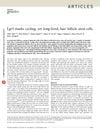 835 citations
,
October 2008 in “Nature Genetics”
835 citations
,
October 2008 in “Nature Genetics” Lgr5 is a marker for active, long-lasting stem cells in mouse hair follicles.
141 citations
,
May 2007 in “Cancer Research” CD34 is crucial for skin tumor development in mice.
176 citations
,
September 2006 in “Stem Cells” BMP signaling prevents hair growth by stopping stem cell activation.
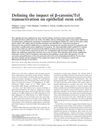 384 citations
,
June 2005 in “Genes & development”
384 citations
,
June 2005 in “Genes & development” β-catenin is essential for stem cell activation and proliferation in hair follicles.
85 citations
,
July 1993 in “The journal of investigative dermatology/Journal of investigative dermatology”
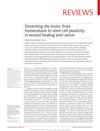 124 citations
,
February 2018 in “Nature Reviews Genetics”
124 citations
,
February 2018 in “Nature Reviews Genetics” Stem cell plasticity is crucial for wound healing but can also contribute to cancer development.
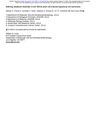 October 2023 in “bioRxiv (Cold Spring Harbor Laboratory)”
October 2023 in “bioRxiv (Cold Spring Harbor Laboratory)” Blocking both main energy pathways can stop hair follicle stem cell-induced skin cancer growth.
 24 citations
,
January 2019 in “Theranostics”
24 citations
,
January 2019 in “Theranostics” Loss of Pten in certain hair follicle stem cells increases skin cancer risk.
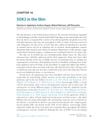 1 citations
,
September 2015 in “Elsevier eBooks”
1 citations
,
September 2015 in “Elsevier eBooks” SOX2 is crucial for skin cell function and hair growth, and it plays a role in skin cancer and wound healing.
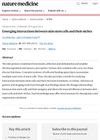 426 citations
,
August 2014 in “Nature Medicine”
426 citations
,
August 2014 in “Nature Medicine” Skin stem cells interacting with their environment is crucial for maintaining and regenerating skin and hair, and understanding this can help develop new treatments for skin and hair disorders.
